This post has been updated in 2015.
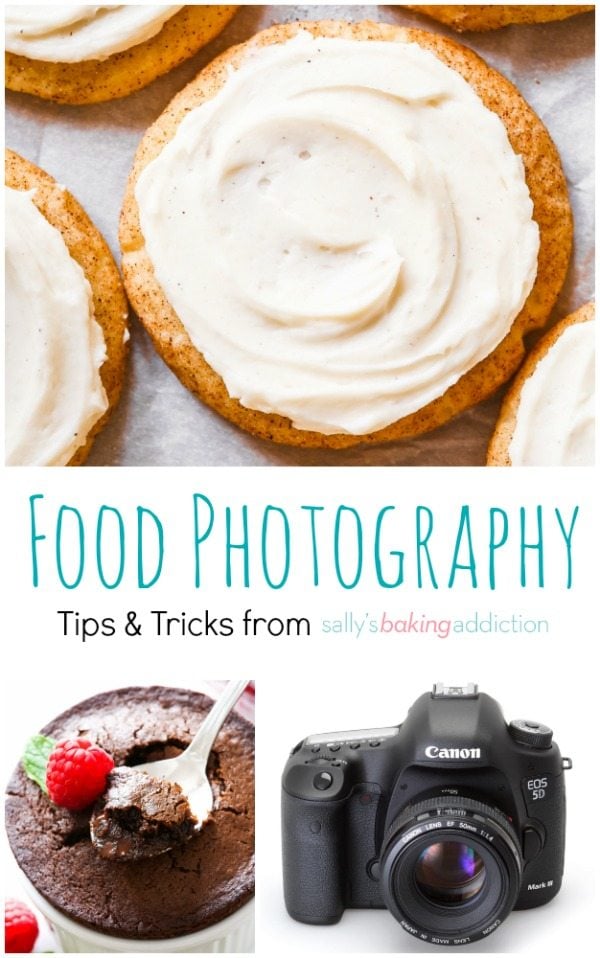
Food Photography Introduction
There are hundreds of thousands of resources for learning how to improve your food photography.
Photos are the bread and butter of my blog. I like to think of them as the strategic “selling point” to my recipes. I can only say so much about a brownie being fudgy. I want to SHOW you how fudgy it is. And to be honest, not many readers read the text of the blog. They are there for the photos and the recipe.
Aside from posting quality content (over quantity) and being present/available to readers, I have learned that the photography is what draws in my crowd. And makes them stay. Bad food photos are a turn off. And I write this knowing I have some poor shots on my website – I cringe when I look at old photos. Heck, I even cringe looking at photos from a couple months ago. I learn and try to improve with every single photoshoot. Sometimes I reshoot old recipes for fun if I make the goodie again, but I like to leave a few old photos up to remind myself that food photography is a learning journey.
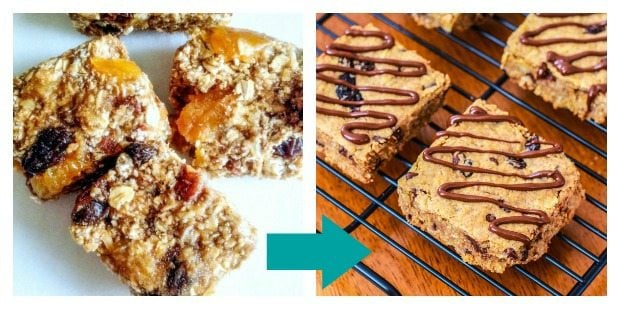
{Photo 1 taken with my iPhone 4 & basic editing in iPhoto to brighten the shot. Photo 2 taken in RAW format, shot in manual mode with my Rebel T2i, tripod, 11am in October 2012, ISO 100, f/4.5, shutter speed 1/1.3 s, Lightroom edits to exposure, sharpening, contrast, shadows, saturation, and white balance.}
After some practice, I have learned that big, bright, CRISP, make-you-want-to-reach-through-the-screen photographs create the most visual appeal for my readers. I also like to shoot my photographs vertically. More on that below.
We eat with our eyes, so my blog’s photography is an important aspect.
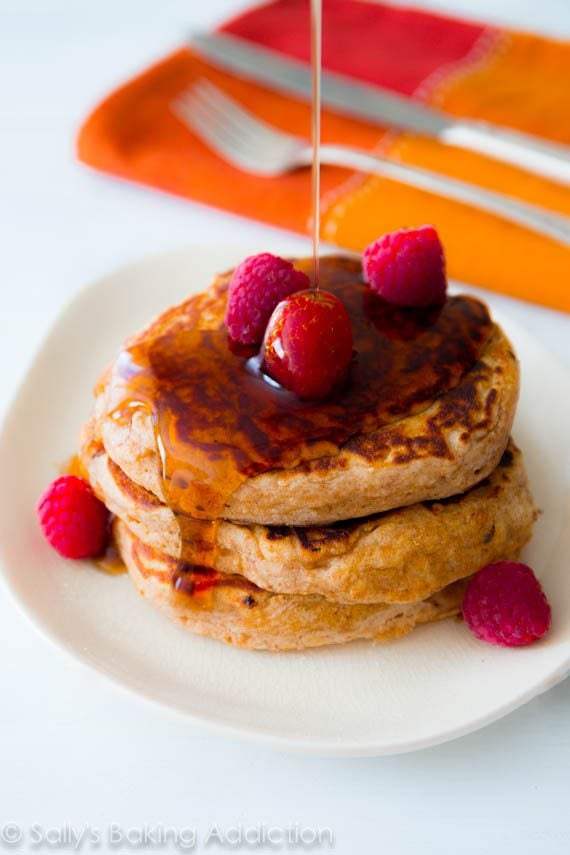
You can certainly have a successful blog without a professional DSLR, editing software, and a pricey lens. However, for me, I didn’t notice my blog taking off until I learned how to use my DSLR. From April 2012 – March 2013, I used my Canon EOS Rebel T2i. I am currently shooting with a Canon EOS 5D Mark iii and a 50mm f/1.4 lens. In August 2013, I bought the Canon EF 24-70mm f/4.0 Zoom Lens. I currently shoot with both this zoom lens and the 50mm fixed lens.
After I began to learn how to use a DSLR. My photos started to be accepted onto photo sites like FoodGawker and Tastespotting, and pinned more on Pinterest (the source for over half of my referral traffic). I saw a spike in traffic and companies were reaching out to me because my food photography was improving. That is why I’m sharing with you a few of the things I’ve learned with my DSLR today.
When I first began blogging, I asked myself what I love most about the food blogs I read. It’s the photography. When I was a lurker, I would gaze at big, bold photos with faded backgrounds and natural style. Nothing forced. I like lots of color, bokeh (the background blur), and pleasant composition. I never took a photography class when I first picked up my DSLR, so it was time to learn.
My #1 piece of advice: practice makes perfect. Take hundreds of photos. Tons. Keep working at it.
My Current Food Photography Tools
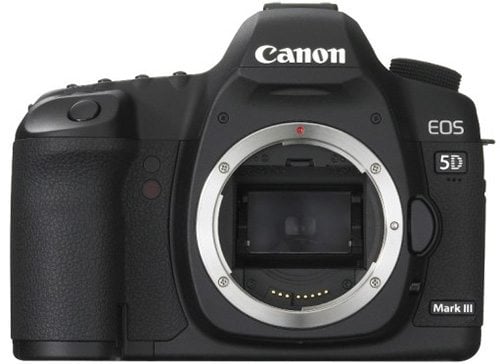
I shoot with a Canon 5D Mark iii and have since April 2013. My current lenses are a Canon EF 50mm f/1.4 & a Canon EF 24-70mm f/4.0 Zoom Lens.
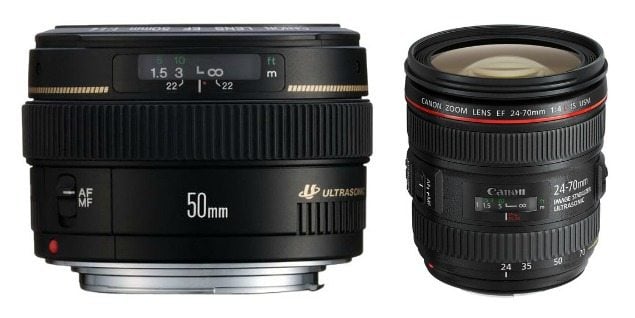
Before my current camera, I shot with a Canon Rebel t2i from April 2012 to March 2013. I have used Adobe Lightroom 4 to edit my photos since April 2012. I think of my editing software as putting life back into my photos. Lightroom is extremely user friendly – much more so than Photoshop (I had to use Photoshop in my college design class – did not “get” it). Needless to say, Lightroom has been my saving grace and I HIGHLY recommend buying it, even if you do not own a DSLR. Use this killer Adobe Lightroom Tutorial.
I shoot in manual mode (M) and have since July 2012. I shoot all of my photos in natural light. Light is everything in food photography. In fact, lighting deserves its own post. If you’d like to read more about lighting right now, I highly suggest looking into buying Tasty Food Photography eBook by Lindsay, the author of popular food blog Pinch of Yum. It is only $19 and it pays for itself. I bought this eBook last May and learned SO much useful information. I reference back to it often when I am shooting.
I do not currently use my camera flash to take food photography. I shoot in RAW format. In July 2012, I bought a Canon EF 50mm f/1.8 lens. This is a very affordable and lightweight lens for its functionality. They range between $100-$120 or even cheaper if you find a good deal. In April 2013, I bought a Canon EF 50mm f/1.4 lens. 50mm means that this lens has a fixed focal length and does not zoom. It delivers tack-sharp images when adequately combined with 3 other very important features that I will explain below: aperture, shutter speed, and ISO.
I use the Sunpak PlatinumPlus 6000PG 61 Tripod for all of my photos. Sometimes I’m faced with dark and dull lighting. Because of these darker conditions, buying a tripod has been one of the best investments I have ever made besides Lightroom. I highly suggest a tripod (that shoots both vertically and horizontally) if you are having trouble with lighting or having your photos stay in focus. Also, food photography is all about the details. Because I use a tripod on a self 2 second timer, it is nice to have both of my hands to quickly move a crumb or cookie to another spot.

Let’s go over the three major controls you use with your DSLR.
Three Major DSLR Controls
1) Aperture. Aperture is measured in F stops (“f/2.8” is the aperture). It controls how light will hit the sensor. It is the size of the hole that the light goes through when it passes through the lens. Photos taken with a low aperture will let in more light (f/3.5 lets in more light than f/8.0).
A lower aperture will also give you a more shallow depth of field. This is when one small object (or part of an object) is in focus when the rest of the photo is blurred. A blurred background is known as bokeh. For my food photography, I like to use a low aperture. Depending on the subject, I do not go lower than f/3.5 and in most cases (practically ALL cases), I shoot at f/4.5.
The two photos below show my Confetti Cake Batter Cookies. I shot these on a very sunny day in December at 12pm. The photo on the left has an aperture of f/3.5. I wanted just the one small cookie in the front (most of the cookie) to be in focus and the sprinkles around it to be slightly blurred. This meant that I had to lower my aperture.
The photo on the right is shot at f/7.0. For this overhead shot, I wanted most of the cookies in focus. I probably could have increased the aperture more, but I’m pleased with how it turned out.
When you take photos with a high aperture (meaning more of your photo is in focus), you need a lot of light because the “hole” that the light goes through when it passes through the lens is smaller.
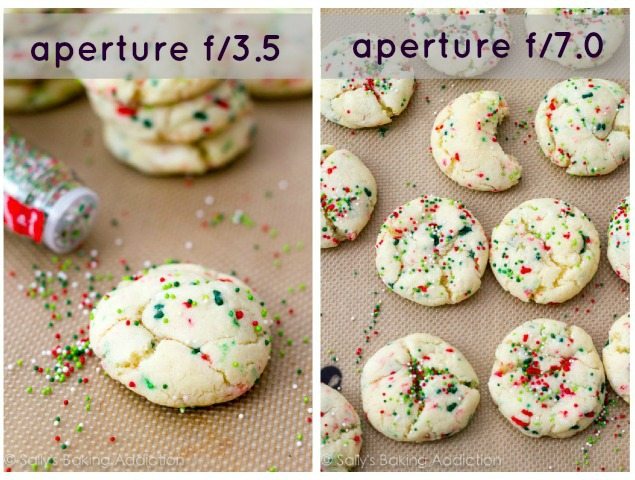
Below is a photo of my Cake Batter Chocolate Chip Cookies. I wanted the entire tower of cookies to be in focus (remember: higher aperture = more of the photo is in focus). This meant that I had to step back considerably from the subject and bump up my aperture to f/8.0. It was a hard shot to take and probably took me about 9 tries.
Because I set the aperture higher to get more of the cookie tower in focus, I had to slow down my shutter speed to compensate for the loss of light. More on shutter speed next.
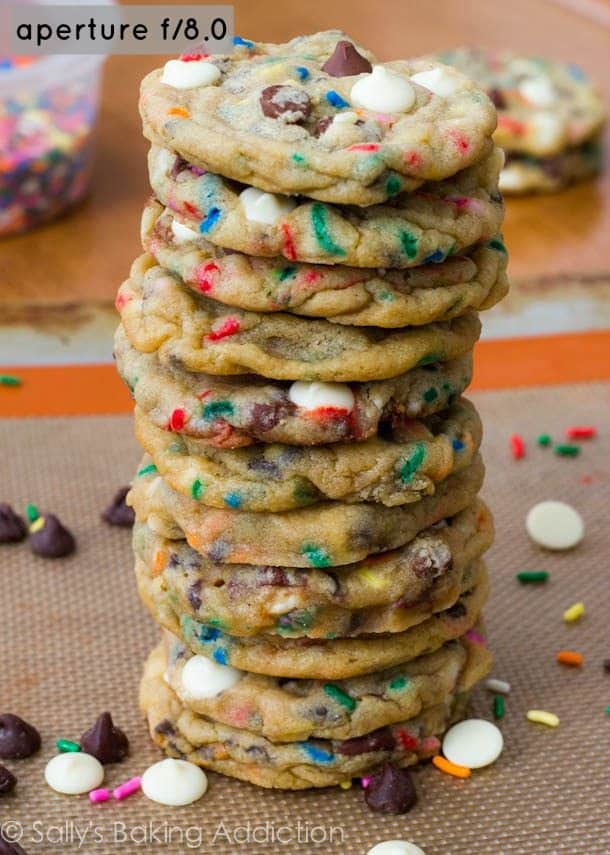
For fun, below is a photo taken of the same cookies 1 year ago. Taken with my iPhone 4 in natural light, no editing, poor composition, too tight, and no styling. Try to step away from your subject, Sally!
2) Shutter Speed. Shutter speed is the amount of time the shutter is open. Shutter speed and aperture are buddies. When you adjust one, you (most of the time) must adjust the other to compensate. While aperture depicts the size of the hole in which the lens allows light, the camera’s shutter is for exposing the sensor to light for a specified amount of time. Shutter speed is represented by seconds or fractions of a second. For example, if your shutter speed is “1/125 s″ that means your shutter is open for one one-hundred and twenty fifths of a second. A shutter speed of “1” is one full second.
The bigger the denominator in the fraction, the faster the speed (1/500 is much faster than 1/30).
To get a decent or perfect exposure, your aperture and shutter speed must be aligned. Even when aligned, I usually still have to brighten or darken the photo in my editing software.
How do I change the aperture and the shutter speed in manual mode? Take a look at your camera’s manual. On most DSLR cameras, you may change the aperture or shutter speed by turning the dial on top of the camera. Below you’ll see this user shooting in M mode (manual), 1/400 s shutter speed, and f/5.6 aperture. Do you see that dial in the red circle, in between the two 1s? That means the shutter speed and/or aperture have been adjusted to perfectly align for a decent exposure. I say decent because, for me, I still notice my photos too bright or too dark when the dial is in the center. Sometimes I move the dial to the left or to the right to get the exposure I am looking for. Amanda explains this well here.

3) ISO. ISO is an indication of how sensitive your camera is to light. 100 is low, 3200 is high. The lower the number the less sensitive your camera is to light and the finer the grain of your photo. A higher ISO setting is used in dark settings to get quicker shutter speeds – but this means a noisier/grainy photo. White on Rice Couple explains ISO in detail here.
I remember when I first began using my DSLR. I had it set to 2400 (!!!) in the afternoon to take a photo of a cupcake in my dark apartment. This was when I was shooting with the kit lens and before I had a tripod. Kevin picked up the camera the next day, saw the 2400 ISO, and asked me if I was shooting in the dark. I had to bump up my ISO very high to get a lighter photo. I could have just adjusted my shutter speed and aperture, but I had no idea what I was doing. The resulting photo (below) is very noisy with a lot of grain in the background.
The ISO is 2400. See how grainy the background is?
Currently, I try hard not to go above ISO 100. This produces a clean, crisp photo with hardly any noise. I am able to go this low because I shoot in bright sunlight and use a tripod. However, I recently fell victim to the weather. It was snowing when I shot my Salted Triple Caramel Cupcakes 3 weeks ago. The lighting was very soft (too soft) – gray and dull and the subject was monotone light brown. My camera lens would NOT focus at 100 ISO, no matter where I put the shutter speed. I had to increase the ISO to 400. Still much less grain (if any) than the photo above.
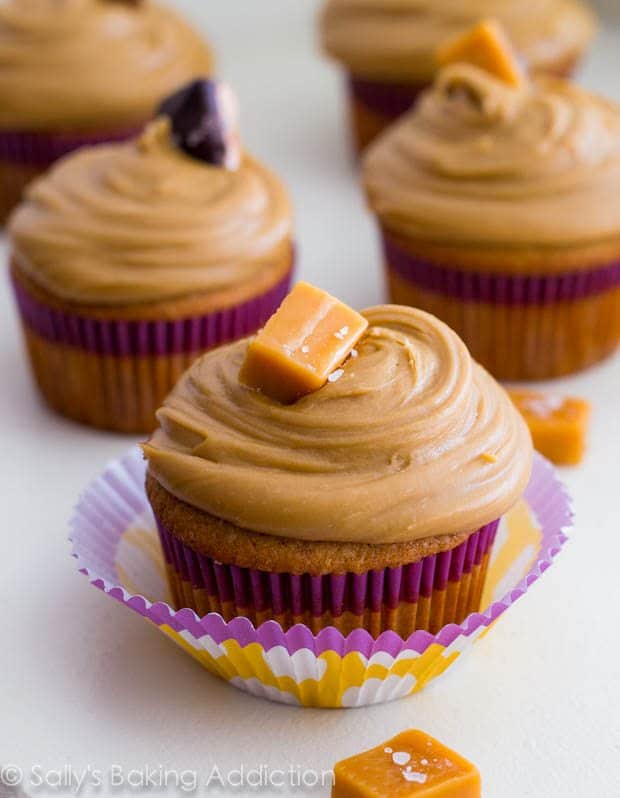
So that briefly covers your DSLR three basic features. Here are a few more things I like to bundle up into the whole food photography package. These are things that can be implemented even without a DSLR.

5 Things to Keep in Mind
1. Styling and Composition. These subjects deserves their own post. Every photographer has their own style. A wedding photographer with soft-lit, glowing photos. A food photographer with moody, crisp, sultry photos. It really just depends what you like and are comfortable shooting. It took me some time to find a style, but like I mentioned before, I am constantly learning and improving and my style may be different down the line.
For food styling, I suggest checking out my #1 resource on the subject: Plate to Pixel: Digital Food Photography & Styling by Helene Dujardin. I highly recommend this book – it covers the ins and outs of everything I’m going over today.
I like my photos close up, but not too close up that you don’t even know what you’re looking at.
What is this stuff? Too tight composition! ↓
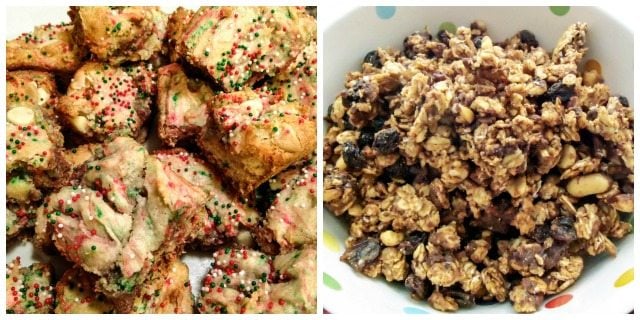
Create movement in your photos. Make the reader’s eyes move from one corner of the photo to another. The entire frame should be interesting – avoid white, blank space. Avoid being cluttered. I’m still working on my food styling. 🙂
Take a step back from your object and style your frame aesthetically. A few sprinkles here, a few granola pieces there. Natural crumbs on the plate – nothing forced. A spoon, a patterned linen – all of these create dimension and a sense of place. Try to always use the rule of thirds.
2. Formatting. The photo above of my Cake Batter Blondies – notice how they have a warm, yellow look to them? I took these photos in the summer, which is a large part to do with the warm yellowish lighting. But I also took these photos in JPEG format before I began to shoot in RAW format. These are the two main image formats cameras shoot in: JPEG and RAW. When you shoot in JPEG, your camera automatically adjusts the photo and removes some of the color data, sharpness, and resolution. This loss of information means that the photo can be saved in a smaller format on your memory card. JPEG is a lower quality photo and gives you less control in post production (editing). I switched to shooting in RAW format in November 2012 after speaking with some photographer friends.
I love shooting in RAW. RAW photos are VERY large files because they retain all of the data from plate to camera to computer. Get ready to use up a ton of space (or all) on your memory card. For me, RAW photos take a lot longer to edit but it is well worth the extra time spent because the images are clear as ever and no color data or resolution was compressed. Using Lightroom 4, I am able to upload the photos in JPEG format to use on my blog.
3. Angles. Most of my photos are taken at three-quarters view. This means they are slightly above eye level, but not overhead. I throw more of the food into the background when shooting in this view – I do not need to worry about my couch, my window, or a chair being in the background. This angle is perfect for me because sometimes I have limited space.
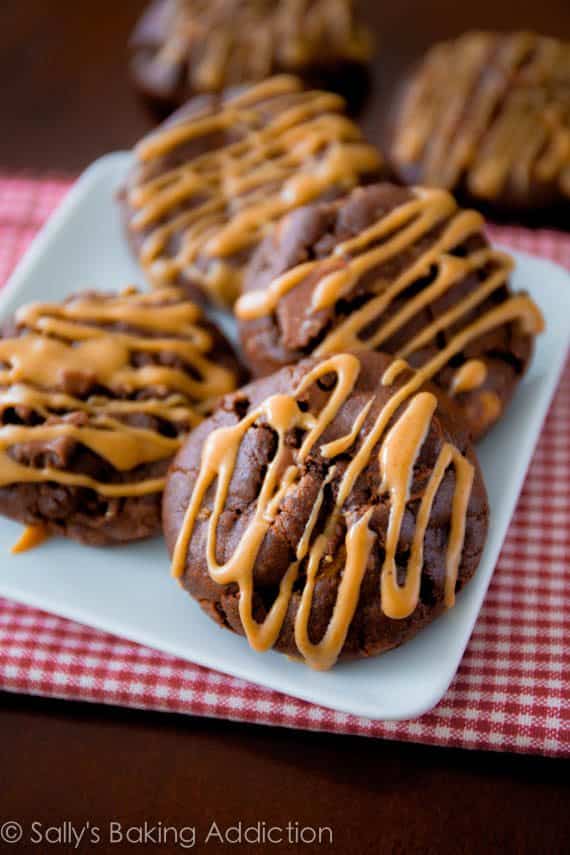
{Shot at three-quarters view at 2pm in October, RAW format, manual mode, tripod, ISO 100, f/4.5, shutter speed 1/1.4 s}
However, I do like to mix it up in a photoshoot to give each post a little pizazz. The photos in my posts are mostly three-quarters, with a few eye level and overhead shots thrown in.
I prefer taking vertical shots opposed to horizontal shots. Practice both ways and see which you are most comfortable with. I like vertical shots for a couple of reasons:
- Vertical photos are larger on my website – again, I like big and bold photos.
- Vertical photos are larger on Pinterest, which grabs the attention of users.
- Vertical photos are much easier to crop down if needed – sometimes my shots aren’t perfectly framed or appear lopsided when I upload them to my computer. I swear, my floors are crooked. Cropping down a vertical shot is much easier than horizontal because you have more photo to work with.
- Vertical photos allow you to create movement easily in your frame, which works better for my favorite way of shooting – three-quarters view.
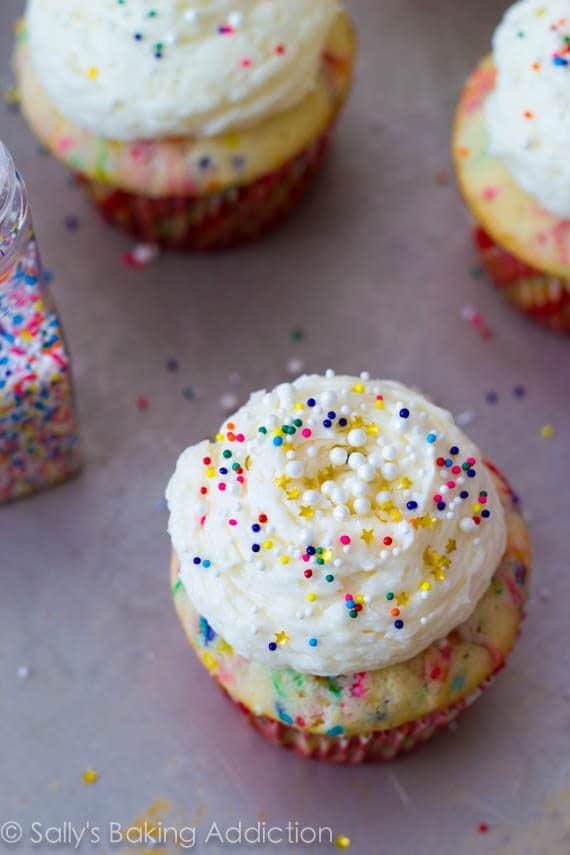
{Shot overhead, looking down on the subject at 2pm in December, RAW format, manual mode, tripod, ISO 100, f/4.5, shutter speed 1/1.4 s}
4. Action shots. Actions shots are fun and well, only possible if you have a friend to help you or a tripod. It kind of makes the reader feel like he/she is right there with you. It makes for a very interesting photo.
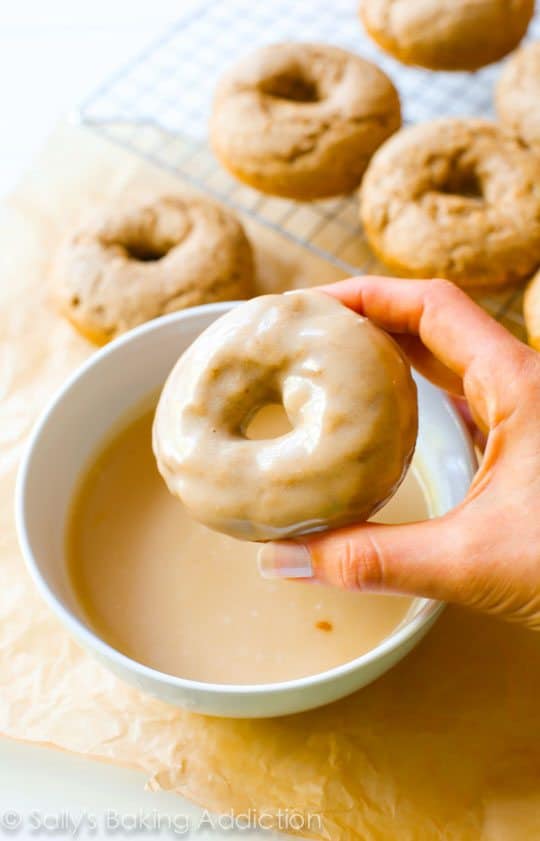
{Shot at three-quarters view at 10am in September, RAW format, manual mode, tripod, ISO 100, f/5.6, shutter speed 1/1.4 s}
5. Props! Also making for an interesting shot are your props and accessories. The fun little extras make food styling so much fun. Pretty dishes, colorful textiles, or vintage silverware. Distressed wood pieces, white plates and bowls, or granite counter tops. I have an extensive and growing collection of unique dishware that I find at Goodwill (or fancy stuff I splurge on at Anthropologie!).
Food can also be a prop in your photo. What is in your recipe? Chocolate chips? Herbs? Lemon? Peanut Butter? Add some extras to your frame for very little cost by using relevant food. But make sure that the finished product is always the star.
You can even use your hands. To me, the photo below is more interesting than simply a cookie on a plate.
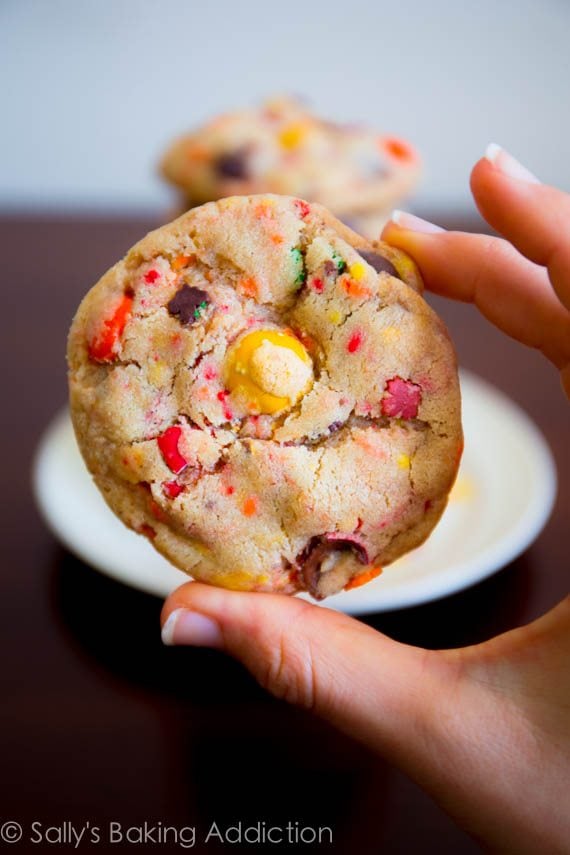
There are so many other topics to touch on in terms of food photography. I could go on and on, but my fingers are about to fall off and I’m sure I’ve lost you by this point. I hope this leaves you with a few extra pieces of knowledge in the food photography world. Food photography can be a lot more fun and a lot less scary if you just keep practicing. I still have so much to learn and improve; it’s a journey.
I’m going to direct you to a few resources that are extremely helpful. Also, a list of products that I use.
Highly Recommended:
- Canon 5D Mark iii (my current DSLR camera)
- Canon EF 50mm f/1.4 (my current lens)
- Canon EF 24-70mm f/4.0 (my current lens)
- Canon EOS Rebel T2i (my first DSLR camera)
- Canon EF 50mm f/1.8 lens (my first and very affordable lens)
- Adobe Lightroom 4 (my easy-to-use editing software)
- Adobe Lightroom 4 Tutorial
- Sunpak PlatinumPlus 6000PG 61 Tripod (my tripod)
- Plate to Pixel: Digital Food Photography & Styling by Helene Dujardin (a must-have book)
- Tasty Food Photography eBook by Lindsay @ Pinch of Yum (buy this now – it’s amazing)
Be sure to check out my other blogging pages.

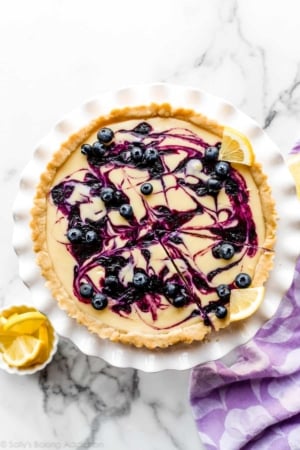
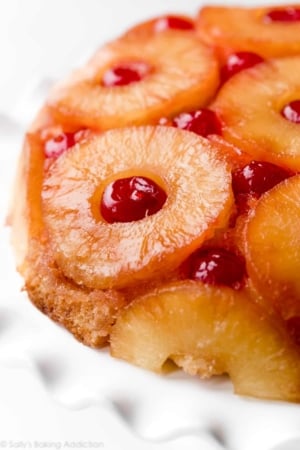
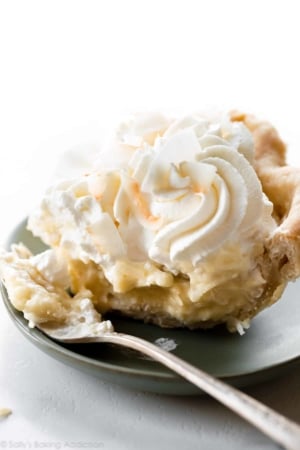
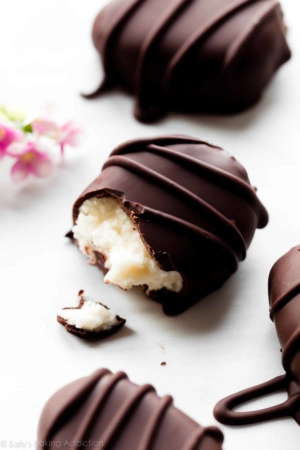
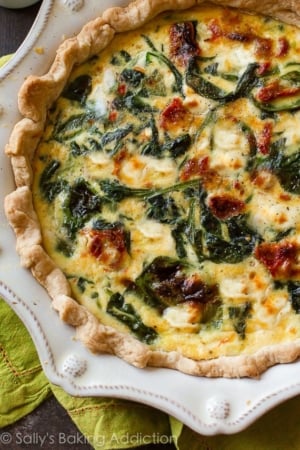
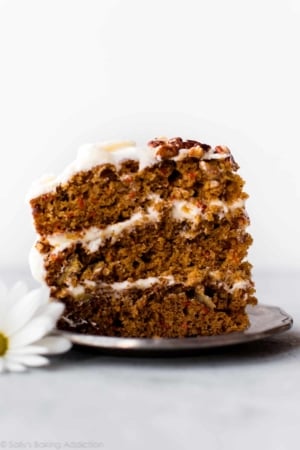












This was such a great overview of what these intimidating photography terms mean. I’m still shooting my food photos with my Android phone and editing them with the Fotor app. First year food blogger here, yup. Lol.
Hi Sally! I’m new to this food photography and blogging, (and also called Sally!) and reading this has really given me a good block to start from when developing my own style of photography. I have a pretty small flat and though there is some natural light it isn’t a huge amount. Do you have any tips on how to brighten things up a bit in a darker room?
Thanks, and great photos!
Hi Sally! These tips are great since I am just beginning my journey with food photography! I have just started at the beginning and I want to pursue food photography along with blogging. I’m not too sure where to begin and your tips helped a lot! The hardest part for me is to style the photos and get them to look good- I know with practice that will come, but where did you even begin??!! That’s been my hardest part, knowing where to truly begin. I did post my blog as well (which I had just started). Any tips on how to begin the blogging stages as well would be great!
Thank you!
Most helpful article I’ve read on food photography!
I loved the way that you have managed to make this so accessible and informative. Many bloggers are reluctant to show others how it is done. i appreciate your honesty and integrity. Great blog.
This post was BEYOND helpful. Thank you so much for having taken the time to share! I just recently started my blog and I’m noticing the huge difference that photography makes. It’s admittedly been a source of frustration, because of course I want everything to be perfect right this second. Luckily I just got a new camera, but am still very much learning how to use it. It was so comforting to hear that you experienced the same thing! And I absolutely love seeing your “before and after”s and how your photography has evolved. Blogging and photography are DEFINITELY a journey, so it’s great to see how far you’ve come. Just trying to remind myself that we all have to start somewhere 🙂 Thank you again! I adore your blog.
This series has been so very helpful. Thank you for using vocabulary that everyone can understand! I have a DSLR which I have no idea how to use, but I’m going to give it a shot this afternoon after reading this blog post. Thank you! 😀
Wowww, thank you for sharing these great tips. They are priceless to me (someone who is still finding the courage to start a blog). Thank you Sally 🙂
This is AWESOME!
You are such a great photographer and you make amazing food 😀
Sally, Your pictures are always so natural and effortless looking. They make every recipe worth trying!! Thanks for sharing some great tips!
Sally! I cannot thank you enough for writing this post. I just purchased a Nikon D3100 and have been so lost as where to even start. I have always wanted to start my own food blog, but didn’t want to post poor pictures. As a long time food blog reader, I too value the importance of good, crisp photos. I am so excited to try out some of your tips and start producing yummy pictures. Thanks again!!
Great post Sally! I still have a point & shoot and I have always used it in manual mode but it’s still not as good as a DSLR. I am learning a lot with this camera and it will definitely help me when I do purchase my first DSLR. Thanks for the awesome tips! 🙂
Thank you for these tips, Sally. I just started my blog and these are truly going to help me out!!! I cannot thank you enough.